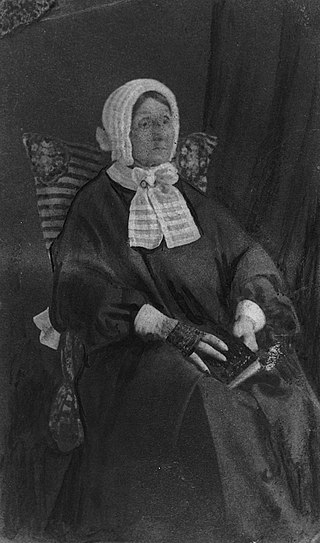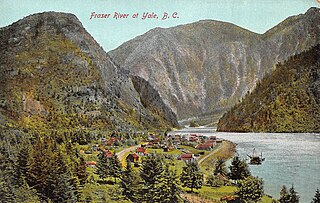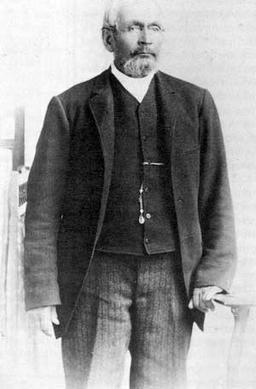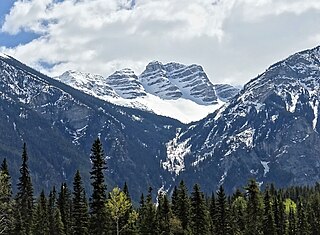Related Research Articles

Laura Secord was a Canadian heroine of the War of 1812. She is known for having walked 20 miles (32 km) out of American-occupied territory in 1813 to warn British forces of an impending American attack. Her contribution to the war was little known during her lifetime, but since her death she has been frequently honoured in Canada. Though Laura Secord had no relation to it, most Canadians associate her with the Laura Secord Chocolates company, named after her on the centennial of her walk.

The history of British Columbia covers the period from the arrival of Paleo-Indians thousands of years ago to the present day. Prior to European colonization, the lands encompassing present-day British Columbia were inhabited for millennia by a number of First Nations.

Walter Moberly (1832–1915) was a civil engineer and surveyor who played a large role in the early exploration and development of British Columbia, Canada, including discovering Eagle Pass, now used by the Canadian Pacific Railway and the Trans-Canada Highway.

Yale is an unincorporated town in the Canadian province of British Columbia, which grew in importance during the Fraser Canyon Gold Rush.

The Cariboo Road was a project initiated in 1860 by the Governor of the Colony of British Columbia, James Douglas. It involved a feat of engineering stretching from Fort Yale to Barkerville, B.C. through extremely hazardous canyon territory in the Interior of British Columbia.

The Russian–American Telegraph, also known as the Western Union Telegraph Expedition and the Collins Overland Telegraph, was an attempt by the Western Union Telegraph Company from 1865 to 1867 to lay a telegraph line from San Francisco, California, to Moscow, Russia.

The Colony of British Columbia was a crown colony in British North America from 1858 until 1866 that was founded by Richard Clement Moody, who was selected to 'found a second England on the shores of the Pacific', who was Chief Commissioner of Lands and Works for British Columbia and the first Lieutenant-Governor of British Columbia. Prior to the arrival of Moody's Royal Engineers, Columbia Detachment, the Colony's supreme authority was its Governor James Douglas, who was the Governor of the neighbouring colony of Vancouver Island.

John Angus Cameron was a Canadian prospector, also known as "Cariboo Cameron".
Gilbert McMicking was a businessman and political figure in Upper Canada. He was the son of Agness Roberson (1745–1827) and Peter McMicking (1731–1823), a United Empire Loyalist who immigrated to Upper Canada during the American Revolutionary War and settled in Stamford in 1780.

Francis Jones Barnard, often known as Frank Barnard Sr., was a prominent British Columbia businessman and Member of Parliament in Canada from 1879 to 1887.
The Big Bend Gold Rush was a gold rush in the Big Bend Country of the Colony of British Columbia in the mid-1860s.

The Stikine Country, also referred to as the Stikine District or simply "the Stikine", is one of the historical geographic regions of the Canadian province of British Columbia, located inland from the central Alaska Panhandle and comprising the basin of the Stikine River and its tributaries. The term Stikine–Iskut is also fairly common to describe the area, and references the Iskut River, the Stikine's largest tributary and describable as its south fork.

Stamford Township is a former incorporated and now geographic township in Upper Canada, later Ontario, on the Niagara Peninsula. It was originally designated Township #2 in the Home District of the Quebec Colony in Canada. Following the creation of Upper Canada in 1791, Township #2 was renamed Stamford and placed within the newly created County of Lincoln. When Lincoln county was divided into Lincoln (north) and Welland (south) counties in 1851, Township #2 was placed in Welland County.
Mark Sweeten Wade was a medical doctor and historian of early British Columbia history. A medical doctor at the Kamloops Home for Men in the 1920s, he was able to interview many veterans of the province's early gold rush, including many of the more famous names in the history of the Cariboo Road, the Cariboo Gold Rush and the Overlanders of 1862 led by Thomas McMicking. He also wrote on medical legislation and hospital policy in the province of British Columbia as well as a biography of explorer Alexander Mackenzie. His works have served as an important source of biographical and historical detail by later historians.

Overlander Falls is a waterfall on the Fraser River in Mount Robson Provincial Park, British Columbia, Canada. It is popular for kayakers. The falls are reached by a short walking trail which starts on the Yellowhead Highway 2 km (1.2 mi) east of the Mount Robson visitor centre. The waterfall is named for the Overlanders expedition of 1862. A group of 175 men and 1 woman from Ontario travelled across the prairies and through the Rocky Mountains, intending to reach the Barkerville or Cariboo goldfields. Just west of Overlander Falls, the group split. About half continued down the Fraser River, eventually reaching Barkerville in late fall of 1862, but over a year had elapsed since Billy Barker's gold strike and there were no claims left to stake. The other half abandoned their dreams of gold and rafted down the North Thompson River to Fort Kamloops.
The O'Keefe Ranch is a historic ranch in the Okanagan region of British Columbia, Canada on the Canadian National Railway, just northwest of Vernon. The ranch was founded in 1867 by Cornelius O'Keefe.

George Flett was a Presbyterian missionary in what is now Manitoba, Canada. Flett was of Orkney and Cree descent. As a young man he farmed on the White Horse Plains, led a gold exploration party to Edmonton and then became the first post master for the Hudson's Bay Company at Fort Victoria, Alberta. Flett was an interpreter to the first Presbyterian mission to the northwest between 1866 and 1867. After serving as a delegate in the provisional government of Louis Riel during the Red River Rebellion, he became a missionary among the Ojibwa of Okanese Reserve, serving from 1873 to 1895.
Parsonville is a ghost town on the east shore of the Fraser River approximately opposite Lillooet. On BC Highway 99, the locality is by road about 100 kilometres (62 mi) northeast of Pemberton, 64 kilometres (40 mi) northwest of Lytton, and 172 kilometres (107 mi) west of Kamloops.
Margaret McNaughton was a Scottish Canadian author and historian. Her account of her husband's experiences travelling across Canada to the Cariboo gold fields was the second non-fiction book published by a woman in British Columbia.

Overlander Mountain is a summit in British Columbia, Canada.
References
- ↑ the Dictionary of Canadian Biography Online - Thomas McMicking
- ↑ "Thomas McMicking". www.mcmickingfamily.com. Archived from the original on 2016-06-30.
- 1 2 The Cariboo Gold Rush - Primary Source http://bcheritage.ca/cariboo/primary/mcmick.htm
- ↑ St Andrew's Presbyterian Church, Victoria, British Columbia/People/Robert Burns McMicking http://web.uvic.ca/vv/student/st_andrews/mcmicking_rb.php
- ↑ "Robert Burns McMicking". www.mcmickingfamily.com. Archived from the original on 2016-06-30.